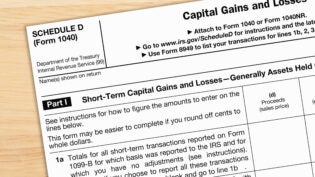
We don’t need to tell you that cash is the lifeblood of any business—or that tracking the cash that flows in and out of your company is key to understanding your overall financial health. Consider the #1 reason why small businesses fail: poor cash flow.
Many a profitable business has failed because it simply ran out of cash. Avoid a similar fate with cash flow analysis, starting with a simple but crucial cash flow statement.
Why track your cash flow?
There are many reasons to track your cash flow that go beyond simply keeping your doors open. You may not be able to pay your employees, much less invest in your company’s growth, if you don’t know exactly how much cash is coming in and going out of your business at any given moment.
Tracking your cash flow can help you identify patterns and plan accordingly to avoid a dreaded shortfall. This timing is especially important for seasonal businesses and those that are subject to market swings.
Cash flow is also one of the primary factors lenders are looking at when you apply for a small business loan. You should know exactly where you stand before requesting a loan, as the strength of your cash flow can make or break your application. Increase your chances of approval by assessing the health of your cash flow, then shoring it up where necessary.
Bottom line: Managing your cash flow will pay dividends that dramatically outweigh the required effort.
What is a cash flow statement?
Also known as a “Statement of Cash Flows,” this important document reports the source of money that comes into your business (inflows) and goes out (outflows). A cash flow statement essentially summarizes the cash earned and spent during a specific period—generally a month, quarter or year.
In addition to showing you the movement of money in and out of your business during a specific timeframe, the statement shows you exactly how much cash is currently available to cover bills, debts, payroll and other expenses.
Building a Cash Flow Statement
There are two ways to build a cash flow statement: the direct method and the indirect method. The direct method is preferred by the Financial Accounting Standards Board, and measures actual cash flow from operations. The more popular indirect method is based on the accrual method, which records credits and debits when they occur regardless of when payments are actually made or received.
While the direct method gives you a better view of the cash moving in and out of your business, it can also be more difficult to prepare as the required information tends to be harder to assemble. The data needed for the indirect method is generally easier to come by, as it can be found on your income statement, balance sheet and general ledger, which makes this the preferred method for most businesses.
Regardless of the method you use, cash flow statements are built upon three main categories: operating, investing and financing activities. The difference in the two methods lies in how you handle the operations section.
Operating Activities
Cash from operating activities includes the earnings that flow into your business and the cash that flows out during normal day-to-day operations.
In the direct method, you’ll record revenue that comes in for your goods and services (+) and goes out (-) for payroll, operating expenses and payments to suppliers, plus any income taxes or interest paid. Once you combine your receipts and payments, you’ll arrive at your net cash flow from operations.
The operating section is a bit different for the indirect method as it begins with your net income, which you adjust for depreciation and amortization. Next, you record changes in accounts receivable, accounts payable, inventory, current assets and current liabilities (including gains and losses on any sales of assets, and debts you decide to write off).
This will give you the net cash generated from operations. For both methods, recording your investing activities is the next step in preparing your cash flow statement.
Investing Activities
This section of your cash flow statement includes the purchase or sale of long-term assets like property, furniture, equipment, land and buildings. You may also include any merger with, or acquisition of another business, along with the purchase or sale of securities like stocks and bonds. Add these together to calculate your net cash used in investing activities.
Financing Activities
The third category on your cash flow statement is where you’ll record information on debt and equity that has been issued or repaid, including any loans you take out or repay, stock you’ve issued, and dividends you’ve paid to investors. Total these inflows and outflows to calculate your net cash from financing.
Closing Cash Balance
Once you’ve totaled up your operating activities, investing activities and financing activities, add them together to calculate the net cash increase or decrease for the period. Add this figure to your opening cash balance (last period’s closing cash balance) to arrive at your new cash balance.
Building a cash flow statement is the first step to effective cash flow analysis, which doesn’t have to be difficult. You’ll find free templates and many helpful resources for both methods of preparing a cash flow statement online.
Understanding where your company’s cash comes from, and what you spend it on, is a simple but crucial step for every small business to not only survive, but thrive.
1963 Views












